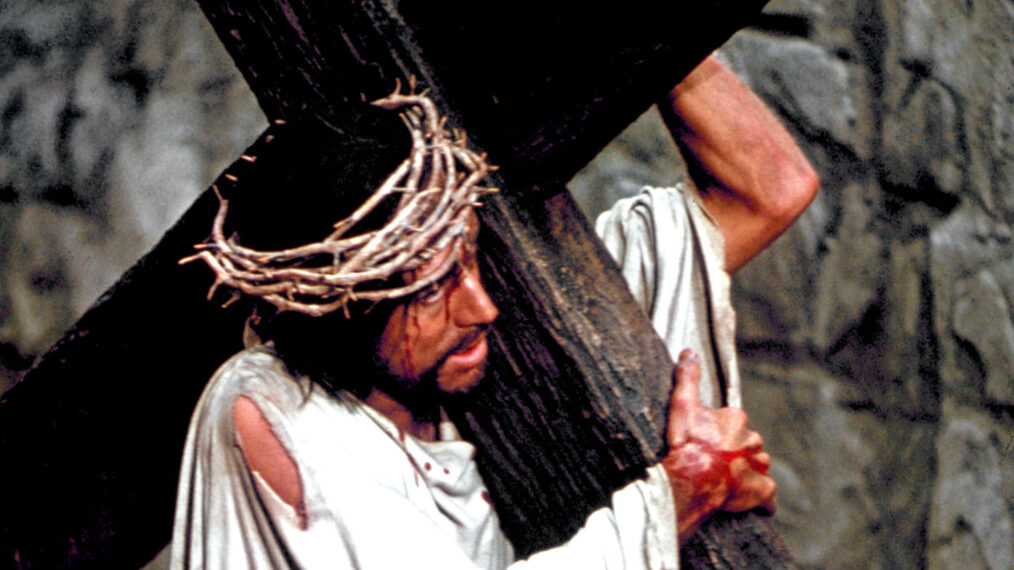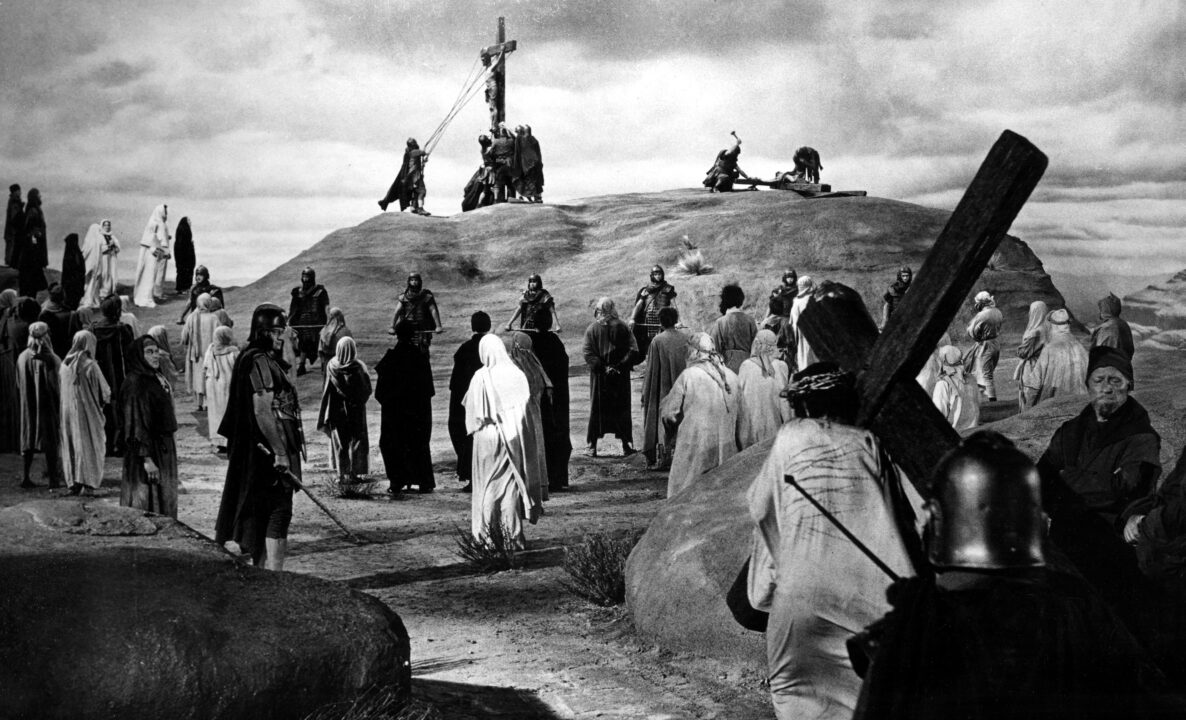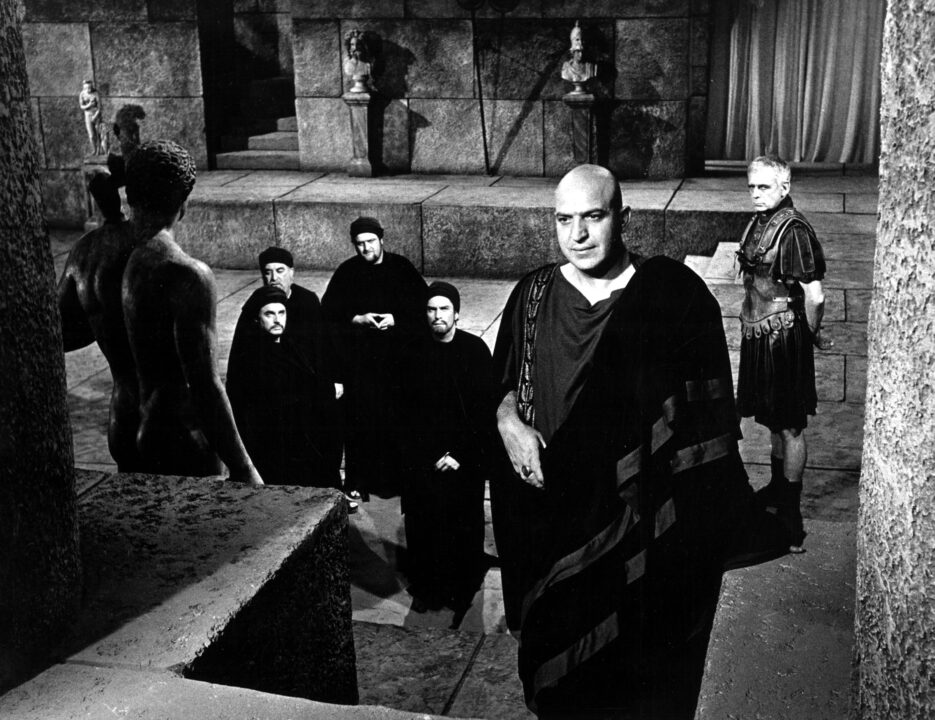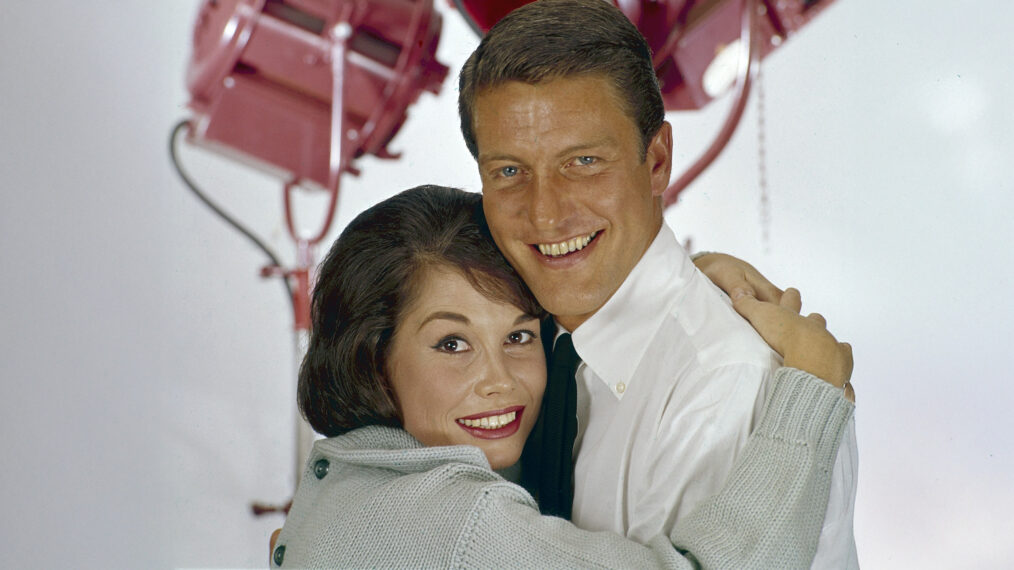6 Things You Never Knew About ‘The Greatest Story Ever Told,’ the 1965 Religious Epic

The 1965 Biblical epic The Greatest Story Ever Told — which airs tonight at 8pm EST on TCM as part of their Easter season programming — was considered one of the most anticipated movies in early ’60s Hollywood. Adapted from a successful 1947 radio series and a 1949 novel that sold over 3 million copies, the film was green-lit for a then-unheard-of $10 million budget, and set to be filled with famous faces, from Robert Loggia to Charlton Heston to Sidney Poitier.
However, this retelling of the life of Jesus Christ suffered from production problems of Biblical proportions – including legal battles that delayed filming by years, on-set deaths, and Arizona snowstorms. A moderate success upon release, it struggled to recoup its massive budget ($20 million, or $203 million in today’s dollars), with some critics believing that it helped end the 1950 and ’60s Bible film trend.
Today, the movie is considered an overlooked classic, known for its countless high-profile cameos (John Wayne! Pat Boone!) and for introducing Swedish film star Max von Sydow (who would later star in a very different kind of religious film, The Exorcist) to American audiences. Read on to find out everything you didn’t know about one of the last of the big budget Bible epics.
1The film got delayed by a desert snowstorm

Everett Collection
Director George Stevens set out on a location scouting trip to the Middle East in late 1960; however, as he later told the New York Times in 1965, he chose to shoot in Utah and Arizona instead because “the Jordan Valley and the country we used for the Jordan Valley here are absolutely interchangeable.”
One thing Arizona has that the Holy Land doesn’t? Winter snow. The film shot in Page, Arizona, in Glen Canyon, with the set right next to a dam that was in the process of being built; filming ran over by months, causing the actors to have to pretend they were shoeless in the Middle Eastern heat, when in reality, they were shivering in twenty degree weather.
Then, there was a snowstorm. Dutch photographer Tony van Renterghem, who served as an assistant on the film and wrote a blog post about his experience in 2004, recalled that “a fierce blizzard forced the production to a grinding halt. Resumption of shooting would have to be postponed until spring, but … the waters of the Colorado were starting to rise behind the new dam and time was running out. Refusing to be stopped by a mere snowstorm, Stevens grabbed a shovel and ordered each and every one of us to follow his example and start shoveling to clear the snow off the sets. … That night it snowed again, but at that evening’s production meeting Stevens still insisted that he’d continue shooting through Christmas till we finished, come Hell or high water!” Luckily, cooler heads prevailed, and the cast and crew were able to leave for the holidays.
2The script was co-written by a famous poet
You may have studied the work of Pulitzer Prize-winning poet and historian Carl Sandberg in high school. But, as a June 1960 issue of Variety announced, the then-82-year-old writer would take on as his first-ever screenwriting project The Greatest Story Ever Told. Sandberg was one of the half-dozen writers credited with work on the film (and probably part of why the film’s production spent over a million dollars before even a single frame of film was shot). Sandberg worked on the script for over two years, but supposedly, only a single scene of dialogue that he wrote made it into the final film.
3It gave Telly Savalas his signature look

Everett Collection
Though the name Telly Savalas instantly brings to mind the gleaming, clean-shaven dome he sported in On Her Majesty’s Secret Service and five seasons of Kojak, the star didn’t show up to Hollywood looking that way. In fact, in his Oscar-nominated 1962 performance in Birdman of Alcatraz, Savalas sports dark brown hair on the sides with a naturally receding hairline on top. But for his role as Pontius Pilate, director Steven decided that Savalas should shave his head to look more powerful and threatening.
What did Savalas initially think of the decision? ” [I thought] ‘I don’t care, the price is right,’ Savalas recalled during a 1986 interview on the British talk show Wogan — though he was grateful that Stevens delayed production so that his young children could watch him get his haircut, and not be frightened by their dad’s new look.
4The cinematographer passed away on set

Everett Collection
Cinematographer William C. Mellor had previously collaborated with Stevens — in fact, he had won two Oscars for his previous films with the director, 1951’s A Place in the Sun and 1959’s The Diary of Anne Frank. However, in 1963, Mellor had a heart attack on set while filming The Greatest Story. Already badly behind, the movie could not suspend filming, and replaced him with Loyal Griggs so that the shot would not be disrupted.
5John Wayne had a single line
The Greatest Story is probably just as famous for its casting as it is for the actual content of the film. On one end of the spectrum, the film utilized over 1500 extras, most of whom were paid the minimum wage of $1.25 an hour. On the other end, the movie was packed with endless celebrity cameos — Pat Boone, Angela Lansbury, and Shelley Winters are just a few of the major stars who show up briefly. But because filming ran so long, some of those celebrities had their contracts run out before their scenes were finished.
Such was the case with John Wayne, who utters only a single line in the film. He was scheduled to appear in a second scene, but due to his schedule, he couldn’t be on set for filming; a crew member supposedly appears in his place as The Centurion during parts of the Crucifixion scene, wearing his helmet low so that viewers couldn’t tell it was not quite the Duke himself.
6Film tricks were used to hide Mary Magdalene’s changing body
When a film’s production runs years past when it was supposed to, a lot can change in the lives of the actors who were cast in the film. That was the case of Joanna Dunham, who played Mary Magdalene in the film; the young actress became pregnant with her first child mid-way through production. In the film’s later scenes, Dunham is shot from unusual angles, or from the neck up, to hide her developing bump.

Hollywood Heaven
April 2021
Take the high road to Hollywood Heaven with feel-good TV shows, movies, music and more!
Buy This Issue
